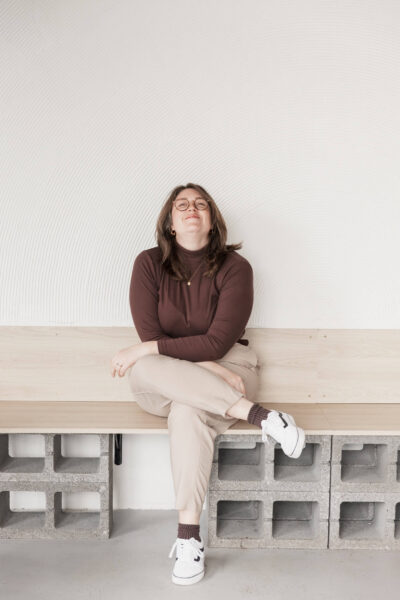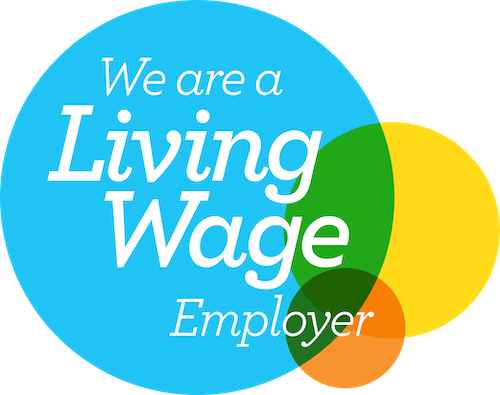User testing is a ridonculously important part of launching and improving a small business website. It also has the added bonus of being free, which is music to us small business owning ears.
This blog post is part of our September 2018 campaign of 30 five-minute tasks for small businesses, and unlike most of our other tasks, you guys are generally hella good at doing at least basic user testing. I’m here to help you take it up a notch.
Whether it’s a DIY job, a buddy-slash-designer who owes you a favour, or a professional AF agency building your website, chances are that at some point you’ve sent a link to a buddy and said “hey kitty girl, here’s my new site, can you let me know what you think?”. This is pretty basic user testing.
If your buddy is a good friend, they click around a bit and tell you how lovely your website is. If they’re a great friend, they’ll also point out any broken links, typos, illegible text and weird formatting too. I love friends like these.
Word of warning though, if you have a wonderful friend like this, maybe don’t sent the link straight away. My husband and Studio Cotton’s technical director Alex is my go-to test user, and sometimes I send him a link just because I want praise – then immediately throw a mild strop when he finds an error. Damn you, wonderful Alex.
Predictable, messy humans
Humans generally follow the same pattern when viewing online, because even though we are messy, we are also hella predicable. The same goes for user testing. I can almost guarantee you that every type of friend, from the good to the great to the wonderful husbands, will probably click seemingly at random through your site, most likely scrolling top-to-bottom through the pages in your main menu.
Again, this is super useful to us website designers, but it’s not particularly thorough or accurate. It can also result in some vague feedback which, when you’ve spent 20 hours or more building a site, make you want to do a little cry or rage quit the whole dang thing.
That’s where user testing scenarios come in. Instead of the generic “whadya think, bae?”, user testing scenarios give our best buddies a story and an objective. Us website designers can watch what they do and how they do it and identify realistic opportunities for improvement as well as gain feedback based on a likely user experience.
Creating a user testing scenario
Firstly, you need to pick your scenario. I’ve put together some super fun and over-the-top suggestions at the end of this scenario, but if you want feedback on something specific to your site, it’s best to design your own specific story.
Think about what you want to test, it could be your checkout, a contact form, wholesale information or blog content. Then think about the eventual website visitor who will want this information, and why. The less your tester knows about the goal, the better. For example, if you want to make sure someone can find your opening hours, the task shouldn’t be “find my opening hours”.
The average real-life website visitor wouldn’t do that, they don’t want to know every time you’re open. They want to know if you’re open at a specific time, for a specific reason. This is a common, realistic problem, and your website holds the solution. The problem scenario would be “you want to see your best friend for a cuppa tea after work”.
I also like to throw a curveball in, something that could send a user journey in a less predictable direction. Our scenario above could then become “you want to see your best friend Allan, who is dairy intolerant, for a cuppa tea after work. He’s just got back from holiday, on the train, and will have a massive suitcase with him”.
Assessing the user test
User tests are best when assessed in person, that way you can see each action and reaction in real time. It also makes the testing process way quicker, and means you can buddy up with another website owning pal to assess each other’s site.
Supply a slice of cake or some ice cream, after all your friend is helping you out and everyone loves cake, even if Allan can’t eat ice cream. Sit your tester in front of a laptop or mobile phone, and explain what’s about to happen.
- You’re going to give them a question or problem, which they need to answer or solve via your website
- The tester cannot ask any questions or provide a commentary on their actions
- They should raise a hand when they’re happy they’ve found the answer or solution
- You’ll then ask a few friendly questions about their experience
Then give the scenario, and make sure they fully understand the problem or question. Watch carefully as they move around your site, and make a note of the pages they visit. If they focus on any specific area, highlight any text, or focus on an image, write that pish down.
At the end of the task, repeat the problem or question again, but do not give the tester another try if they’ve missed something. Then ask for the answer or solution, and why they came to that conclusion. To the scenario above, I expect to hear something like “The cafe is open until 7, the menu has oat milk and loads of teas, plus I looked at some pictures which showed loads of room for the suitcase.”. If they’re extra thorough, they may have even copied the postcode ready to send to Allan so he could find his way from Temple Meads.
Now we didn’t really care about that answer, we just wanted them to find the opening hours, which they hopefully did, and that’s awesome. Now you can ask a few bonus questions about your site and their journey.
User testing questions
- How would you describe your experience?
- Was there anything you found surprisingly delightful?
- Were there any frustrations or confusing moments?
- When you clicked on X, what information were you hoping to find?
- You spent time reading Y, what did you learn from this information?
- In this scenario, what would you do next?
- If you could change one thing, what would it be?
- Can you think of a time recently when you needed to find similar information from another website, and how does my website compare?
The answers to these questions are cray useful, and don’t be surprised if you come away with a to-do list of small improvements. You don’t need to make every change suggested or fix every frustration as you literally cannot please everyone, all of the time.
If a change doesn’t feel right to you, and you have a justification for doing something a different way, follow your gut. However, if you’ve run five scenarios and it has frustrated five testers, it’s time to concede and find a better way of doing it.
Get expert website help in our £15 community
A super simple Slack community where you can ask Aime questions, get feedback, and/or join a live session every fortnight.
Aime’s ridiculous yet somehow realistic scenarios

1. Samantha is writing a blog
Goal: Review Contact Page
Scenario: You are Samantha, a writer. You’re a ruddy great blogger, but you’re just starting out and so approaching a couple of small businesses about an article on [insert something you could talk about]. You want to know if [your name] might be a good source for the piece.
Hopeful outcome: Your Samantha checks if you write a blog to see if you’ve shared something like this before, visits the contact page and gets in touch via a suitable form of contact.

2. Ste’s putting together a gift guide
Goal: Find a product
Scenario: You are Ste, an assistant at a fancy-ass magazine. Your boss wants you to come up with a shortlist of products from brands for an article on indie gifts from interesting makers
Hopeful outcome: Your Ste looks through your product catalogue and notes down a couple of favourites, then checks out your about page to see if you’re interesting. Ste might even get in touch to see if you’d like to be in the fancy-ass magazine.

3. Emma needs a home for crochet club
Goal: Make sure website attracts groups & meetings
Scenario: Emma runs a Sunday evening crochet club for 5 – 10 people. Her current venue has decided to close at the weekend, so she’s scoping out potential new spots. Would my business be suitable?
Hopeful outcome: Your Emma looks around the website for mentions of groups and meets, and easily finds any pricing. She can see pictures that indicate how much room there is, and check that you’re open on Sunday evenings. She might get in touch via the contact form to ask about her club.

4. You need a present for your grumpy nephew
Goal: Find returns info
Scenario: You’re you. It’s your nephew’s birthday in 3 weeks, he’s really fussy and you don’t know him well enough to be 100% sure he’ll like your choice. Buy him a present*.
Hopeful outcome: Your tester finds a product for their nephew, checks the returns policy to make sure it covers the birthday adds to basket and checkout.
*try and stop them before they click ‘pay’ as refunds are a pain!























